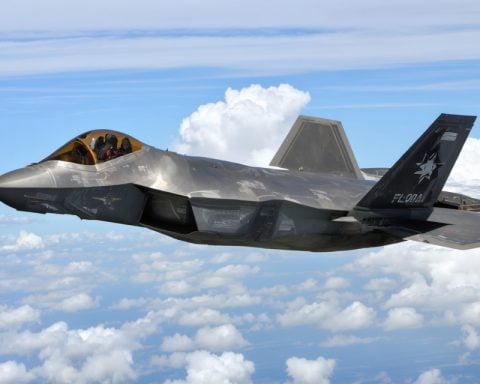In an unexpected announcement Wednesday, the leader of General Dynamics revealed a significant slowdown in submarine manufacturing, aligning the pace of construction with delayed component deliveries. This decision has raised alarms within the U.S. Navy as it grapples with strategic scheduling challenges.
Complex Challenges
The Electric Boat division of General Dynamics, alongside Huntington Ingalls Industries, is responsible for the Navy’s Virginia-class and upcoming Columbia-class submarines. These programs are crucial, yet they face delays due to supply chain and workforce obstacles. Columbia-class submarines, in particular, have suffered setbacks of over a year, compelling the Navy to find solutions amid rising tensions in global power dynamics.
Mounting Costs and Difficult Decisions
Phebe Novakovic, CEO of General Dynamics, unveiled to investors that Electric Boat’s schedules are disrupted by slow component arrivals, hiking up costs directly. Missing key parts like the steam turbines for the USS Columbia, which Northrop Grumman struggles to deliver, have further stalled progress, according to Navy sources.
With components arriving late, Electric Boat is forced to construct submarines out of sequence, resulting in inefficiencies and soaring costs. Adjustments to the assembly process contribute to these financial burdens, causing an eightfold increase in expenditures on certain segments of the submarines.
Urgent Workforce Development
The Navy has responded with a $1 billion workforce-development initiative to boost recruitment, retention, and advanced manufacturing capabilities, hoping to rejuvenate the submarine industrial base. Experts warn that meeting strategic demands requires a substantial increase in production, necessitating an influx of civilian shipbuilders and subcontractors. The stakes are high as the Navy races against time to replace aging fleet components and fulfill international defense commitments.
Is the U.S. Submarine Production Slowdown a National Security Threat?
The recent slowdown in the manufacturing of submarines by General Dynamics, particularly at their Electric Boat division, has painted a complex picture that extends far beyond mere production delays. The rippling effects of this slowdown are being felt across various spheres—economically, politically, and socially—prompting discussions about the future of naval capabilities and national security.
Ripple Effects on Global Power Balance
The United States, a dominant naval power, relies heavily on its submarine fleet to project strength and maintain stability in international waters. The delays in the Columbia-class and Virginia-class submarines could temporarily weaken American naval dominance, reshaping global military strategies. This potential drawback creates an opportunity for other nations vying for maritime influence to exploit this gap.
For communities reliant on defense contracts, these setbacks pose economic challenges. Many towns and cities near shipbuilding facilities depend on the jobs and revenue these projects bring. A substantial workforce deficit is evident, reflecting not just the need for skilled labor, but also highlighting social shifts and educational gaps within these communities.
Interesting Facts and Controversies
One often overlooked aspect is the controversy surrounding the increasing privatization and outsourcing of defense manufacturing. Critics argue that while these practices might cut immediate governmental costs, they ultimately lead to vulnerabilities in military readiness due to reliance on external entities that may also face their own operational challenges.
On a different note, it’s interesting that the delays are partially attributed to complex geopolitical dynamics and resource allocations for high-tech components. The global competition for advanced materials and technologies plays a significant role in these delays, adding a layer of complexity to an already challenging domain.
Advantages and Disadvantages
Advantages: On the positive side, the Navy’s $1 billion workforce-development initiative aims to bolster employment and skills, potentially leading to a more robust labor force in the future. This investment might reinvigorate local economies and enhance technological innovation.
Disadvantages: Conversely, the immediate impact is an undeniable strain on defense readiness and economic pressures on contractors dealing with high costs due to inefficiencies. This situation highlights a significant disadvantage in maintaining strategic advantages over adversarial nations.
Key Questions and Insights
Is U.S. national security compromised by these submarine production delays?
While the slowdown presents short-term strategic challenges, the U.S. Navy is actively seeking solutions and adjustments to bolster production and mitigate risks, suggesting that long-term national security is being safeguarded with comprehensive planning.
Could this be a turning point for the U.S. defense industry?
The current challenges might catalyze a broader transformation within the defense industry, emphasizing the need for modernization, efficiency, and an expanded skilled workforce to meet future demands.
For readers interested in further exploring naval capabilities and defense strategies, you can visit U.S. Navy or General Dynamics for the latest updates and insights into defense manufacturing innovations and policies.
The article has been updated: 2024-11-08 14:10
Here are some suggested related links to include in your post:
1. Defense Tech – A leading source of news and analysis on defense technology, including updates on military equipment and construction programs.
2. Navy Times – Provides comprehensive coverage of naval news, including submarine construction and fleet developments.
3. Military.com – Offers a broad range of military news, resources, and articles focusing on defense policies and military hardware, including submarines.
4. U.S. Department of Defense – The official website of the U.S. Department of Defense, featuring news releases and updates on defense programs, including submarine construction initiatives.
5. Sea Power Magazine – A publication dedicated to naval and maritime affairs, covering the latest trends and issues in naval shipbuilding and submarine development.
6. Brookings Institution – A nonprofit public policy organization that provides research and expert analysis on defense and security issues, including naval strategies and submarine technologies.
7. CNBC Military – Delivers news and insights on military economics, contracts, and construction programs, including the submarine industry’s financial aspects.
8. Defense Industry Daily – Offers in-depth articles and analyses on various defense projects, including the challenges faced in submarine construction.
9. The Hill – A news website that covers politics and policy, including issues relevant to defense spending and military construction delays.
10. Naval Technology – Focuses on the latest developments in naval technology and shipbuilding projects, providing valuable insights into submarine construction.
These links can help readers explore more about the complexities and issues surrounding submarine construction.
The article has been updated. 2024-11-09 04:52
What are the primary factors contributing to the significant delays in submarine construction projects?
The primary factors contributing to the significant delays in submarine construction projects include supply chain disruptions, workforce shortages, and technological challenges. The global pandemic has exacerbated supply chain issues, making it difficult to obtain essential materials and components on time. Additionally, there has been a shortage of skilled labor in the shipbuilding industry, leading to slower production rates. Furthermore, as submarines become more technologically advanced, the integration of new systems and technologies can introduce complexities that delay project timelines. These factors combined paint a troubling picture of the current state of submarine construction.







